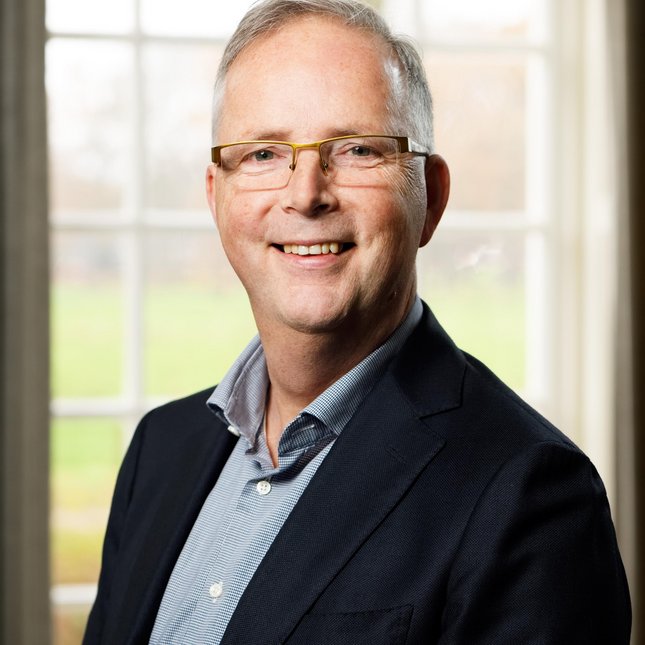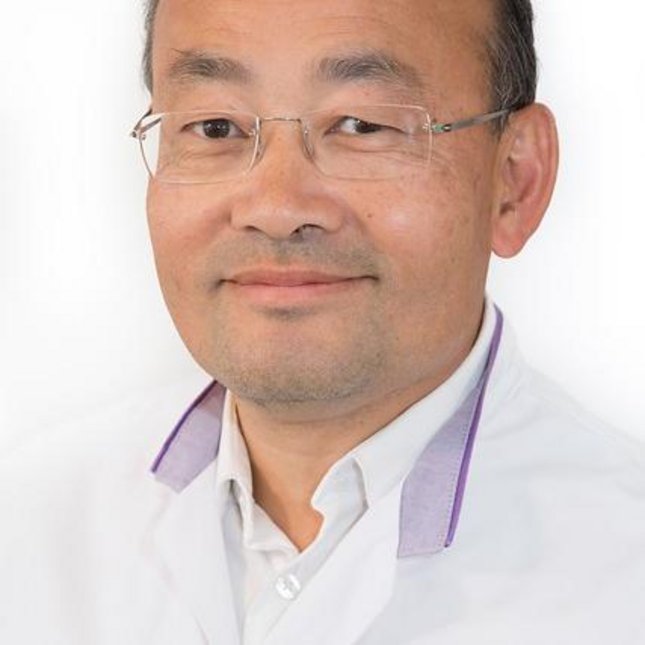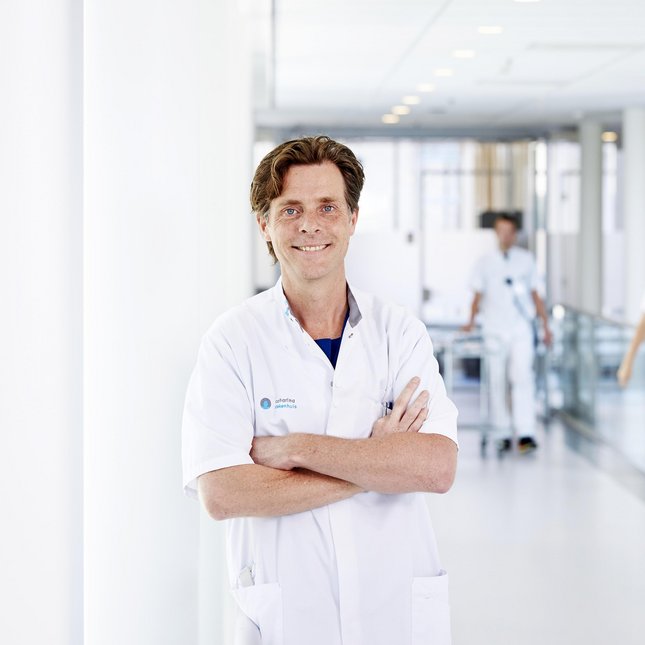Flagship collaboration (March 2018)
High impact medical innovations thanks to flagship collaboration
The fact that there is a lot going on in the Eindhoven region when it comes to developments in technology and innovation, should no longer come as a surprise. The Brainport mainport of the Netherlands is on the map. When the key players in this region join forces in a long-term cooperation on medical innovations, this position will only be further strengthened. Since 2014, Eindhoven University of Technology, Philips, the Catharina Hospital, the Maxima Medical Centre and the Kempenhaege Expertise Centre have been working together in a flagship partnership.
In this partnership with a ten-year roadmap, more than 100 researchers from the university, together with researchers from Philips and the hospitals, are now conducting research into medical issues for patients, healthcare providers and society. Ton Flaman, Philips: "We work together on topics that have a major impact on society. The hospitals are already excelling internationally on these subjects: Catharina Hospital with cardiology, the Maxima Medical Centre with perinatal care and Kempenhaege in the field of sleep medicine. At a later stage, we want to expand the subjects further.”

Working closely
The flagship partnership was initially established four years ago between the TU/e and Philips. Gerome Friesen, TU/e Innovation Lab: "We work a lot with companies and this can be done in different ways. One of them is to submit a research assignment to us. The other option is a flagship partnership. The difference with regular research is the way of working together. At a flagship, the company shares with us where they want to go in ten years. The company lets you take a look into the kitchen. It's also about the masses: there are so many PhDs at work. Together with master students and professors they can make a big difference. The unique thing about this collaboration is that including the hospitals, three parties are very actively involved.”Flaman adds: "The history of Philips and the technical university is long. We did have many collaborations, but they were not really strategic. By strategic I mean, for a long time with common roadmaps in which you work together closely and exchange people. We decided to start in our largest research innovation centre in Eindhoven. Two criteria are very important for such cooperation: proximity and quality. We started with defining the topics in which we are strong here in the region and which are located nearby. And so the partnership as we know it now came into being. We can go to each other by bike, so to speak.”

Meaningful innovations
Lukas Dekker, Sebastiaan Overeem and Guid Oei are the doctors who, on behalf of the three hospitals, are the driving force behind the collaboration. Lukas Dekker, cardiologist at the Catharina Hospital: "The cross-appointments, i. e. people with positions along the entire chain, are very important for the success of this collaboration. Physicians advise Philips and are a part-time professor at the university. Philips people are part-time professor or advisor at the TU/e and a TU/e-employee can also work at Philips or the hospital.” “All this complementary knowledge ensures that we can accelerate meaningful innovations in healthcare, which would otherwise take a very long time to develop,” confirms Sebastiaan Overeem, sleep medicine specialist at Kempenhaege. “We avoid researching innovations that may not be needed at all. This collaboration allows us to investigate this from the beginning and results in innovations that are really needed.” Guid Oei, gynaecologist at Maxima Medical Centre: "Meanwhile, cross-links between the research topics have emerged. It wasn't initially chosen this way, but it grew naturally. The first subsidy requests have already been written and a good example of cross-pollination is a project request for cardiac arrhythmias aggravated by a sleep disorder.”
High societal importance
Flaman: "The foundation for intensive collaboration has been laid over the past three years and now it is time for the next step. From now on we will work by the name of Eindhoven MedTech Innovation Center or e/MTIC. We are in consultation with Brainport and the province of Noord-Brabant and are part of the agenda Mainport-Brainport.” Dekker: "The reason for entering the next phase is that we want to develop more common success factors. Think of storing data and exchanging data. And certainly not unimportant: we want to make the funding structural so we can build further on what we have now. Our developments are of great social importance.” Overeem: "We are working on the major diseases such as sleeping disorders, which affect 10% of the population. Heart and vascular disease, an important cause of death in women and improving pregnancies, that's what matters to us.”

Faster diagnosis
How does this collaboration affect the patient? Dekker: "Of course it is not entirely coincidental these hospitals were chosen. Internationally we are leading and in size, we are the largest in the Netherlands. For this reason, we also see many patients and can, therefore, create large datasets in a structured way. Our aim is to diagnose patients more quickly in the long run. There are a number of ways to improve the lives of patients and future patients. You can be ahead of the problem, and if a problem has already been identified, you can have someone do the right things as well as possible. We can do this by developing better sensors and applying targeted clinically relevant data analysis. It's not just about attaching a sensor, but what do you do with it? How do you interpret and analyse the data? These are new areas, and all the elements for a good analysis are present.”
"A pacemaker will not be implanted automatically because it is twice as small. No, it is determined whether a new pacemaker is an actual improvement for the patient."
Dekker: "In healthcare, a strong development called value-based healthcare is going on. We must demonstrate what we add to a patient's life. That is also important to us. It is good to judge all innovations in the healthcare sector with that same standard. A pacemaker will not be implanted automatically because it is twice as small. No, it is determined whether a new pacemaker is an actual improvement for the patient.” Overeem: "This development is a subject in itself. At the same time, we are also in the process of determining how a choice benefits health care. With the same
infrastructure that allows you to share data and analyse it, you can also determine what it adds. At patient level or wider.” Dekker: "Such technology will lead to a reduction in costs, and we should, therefore, see that as a success. This is socially very relevant because in a few years' time our care will be unaffordable. I am quite worried about that. If you draw the parallel with the environment, we do understand that we need to innovate in order to solve the problem. This awareness is also slowly beginning to penetrate the healthcare sector. We already are thinking differently about this, and the change is taking place slowly.”

Useful research
From the perspective of the university and the PhDs, the flagship collaboration also requires a unique approach. Friesen: "If you have done such a flagship PhD, you are used to working intensively with different disciplines. It is not that you don't get that in other studies, here it is just more. We receive resumes from all over the world for these positions. When selecting candidates, we are responsible for the scientific component and the industry looks at whether someone fits in with the organisation.” One of the PhDs involved in the flagship from the start is Jan Werth. He is in the final phase of his PhD research. For the Faculty of Electrical Engineering, he researches the effects of sleep in premature babies: "I like to work on something that will have a positive impact on the rest of someone's life in the future. At first, I did not consciously choose a flagship PhD. I wanted to work with Philips and they were just starting with this collaboration. I thought the subject was extremely interesting and working together with the hospital gave my research something extra. For the data analysis, I also have a lot of contact with the doctors. What appeals to me very much is that we conduct meaningful research in the flagship, which is an important parameter for all partners. My PhD is almost done and after me, another researcher will continue with my subject. We will probably see the actual result of this research in five to ten years' time, but I am proud to have been at the cradle of it.”

Top talents
Flaman continues: "We are also developing in this collaboration and see we need to become more flexible, for example by working with other students as well. We need people who want to specialize in modern top technology such as data science and artificial intelligence within the collaboration. The PhDs have their own research questions and master's students work with them. Master students really like this, because they get the opportunity to walk around in a hospital and to get to know an industry where they can work later on. We want to be attractive ánd become attractive for top talented people. We have the ambition that a Chinese top student, who is now going to America, will soon land here. And we think we have the resources and opportunities to be very attractive for those students. If you can come to Eindhoven, where you can become a leader in artificial intelligence and work on relevant issues, where you also work in an industry where you can pursue your career: there are not that many places in the world that offer this. Doctors from academic hospitals come here too. First of all, because the hospital is very good, but also because it gives them the space to do research in addition to operational activities.”
Trust and respect
What is striking, all people of the parties involved, are super passionate about what they do. Overeem: "Of course we are enthusiastic, but don't think it's all easy. You start with this collaboration with little to nothing, there are no examples to look at, but people have the guts to start, although we don't know exactly where we are going. All parties who contribute, put where
they talk about into practice.” Flaman: "The enthusiasm also comes from tackling social issues. Society is ageing, there are more and more chronic diseases, and 80% of the costs comes from 20% of the people. If it is so strongly defined, you are also forced to deal with it and contribute to a higher objective. A hospital is a totally different organisation than a company. A company is an organisation other than a university. And that's why you don't see so many collaborations where everybody works so smoothly together. There must be an enormous basis of trust and respect. And you can find that here. What is also important is empathy: when doctors sit down with a businessman and understand how things are going. And when we, Philips, are in the chair of a professor and understand that we do not need to change the direction of research every year. These elements seem obvious, but they are not. Others agree on it, and we are attentive to it with all parties involved.” Dekker: "It's easy to make plans, but this is where it actually happens.”